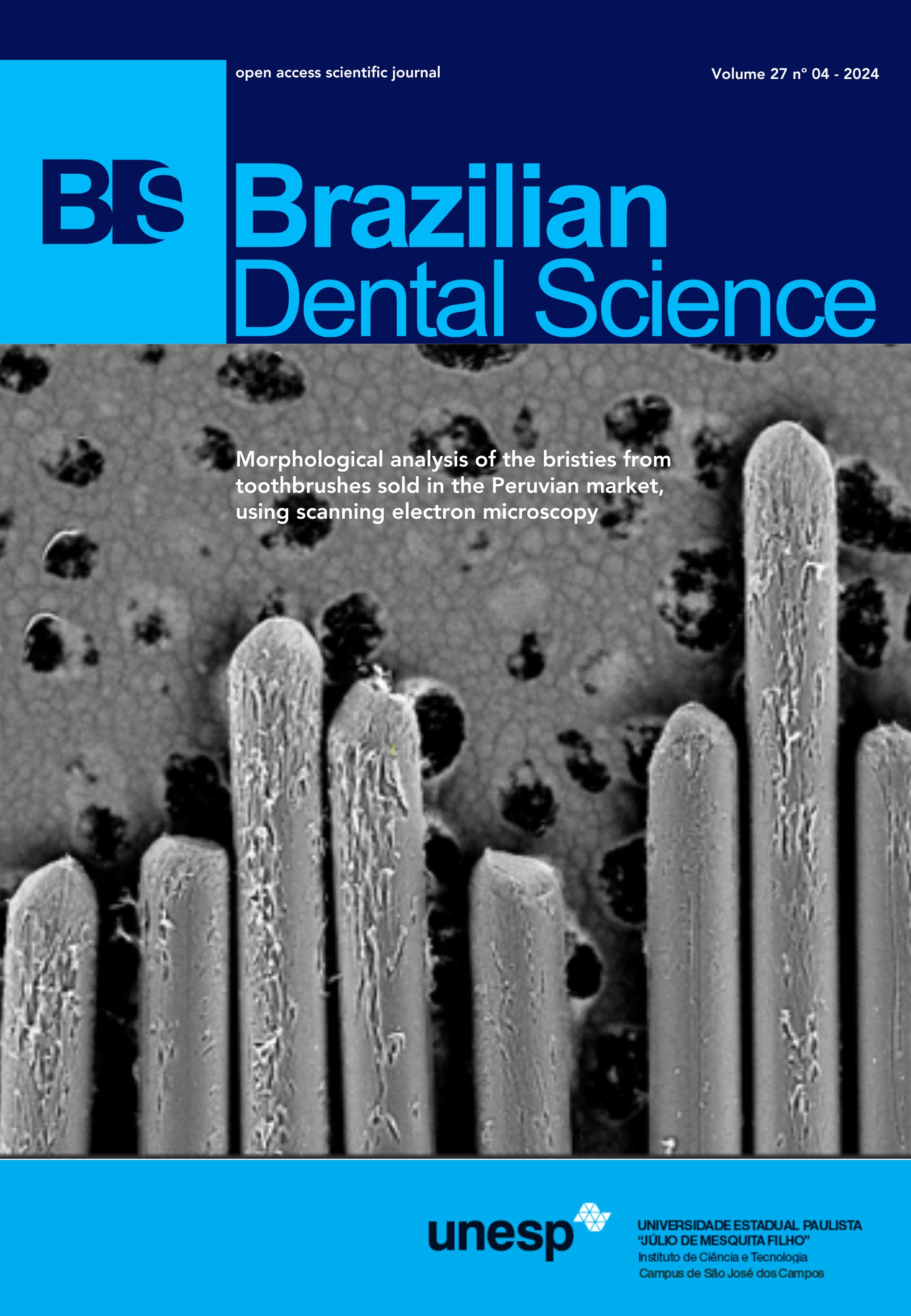Bond strength of a three-step adhesive system modified by beta- TCP particles
DOI:
https://doi.org/10.4322/bds.2024.e4406Abstract
Objective: This study aimed to evaluate the bond strength and fracture pattern of a three-step dentin adhesive system, Scotch Bond Multipurpose (SBMP) (3M ESPE), with or without beta-tricalcium phosphate (beta-TCP) particles added to the primer solution. Material and Methods: Twelve human molar teeth were used, each sectioned perpendicularly into dentin discs. These discs were randomly allocated into three groups: G1 (control), G2 (primer modified with beta-TCP 2%). Each group consisted of four discs for testing. The dentin discs were treated according to the adhesive system protocol. After storage in distilled water, the discs were treated with 35% phosphoric acid gel, the primer (modified or not), and SBMP adhesive, followed by light-curing (Valo Ultradent). Twenty-four hours later, each restored dentin disc was sectioned to obtain specimens for tensile strength testing. Fracture pattern analysis was performed using scanning electron microscopy (SEM). Results: Statistical analysis of the tensile strength results showed no significant difference between the control and modified adhesive systems. The fracture pattern observed using SEM was predominantly mixed. Conclusion: The addition of beta-TCP particles to the adhesive primer solution did not affect bond strength or the fracture pattern.
KEYWORDS
Dentin adhesives; Beta Particles; SEM; Tensile strength; Tooth remineralization.
Downloads
Published
How to Cite
Issue
Section
License
Brazilian Dental Science uses the Creative Commons (CC-BY 4.0) license, thus preserving the integrity of articles in an open access environment. The journal allows the author to retain publishing rights without restrictions.
=================




























